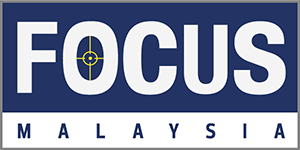BANKS are expected to set aside more provisions as lenders brace for possible higher loan delinquencies when the six-month loan moratorium for individuals and small and medium enterprises (SMEs) expires at the end of September, RAM Ratings said in a statement today.
The credit ratings agency said such measures were “prudent” as eight local banking groups reported heavier year-on-year impairments for the first financial quarter this year (1Q 2020) amid a challenging economic climate caused by the Covid-19 pandemic and the ensuing movement control order (MCO).
“The average credit cost ratio spiked up to 62 bps from 18 bps (or 25 bps after adjusting for a one-off item) in 1Q 2019. One bank also incurred higher provisions due to a lumpy default in its Singaporean operations,” RAM’s co-head of financial institution ratings Wong Yin Ching said in conjunction with the publication of RAM Rating’s Banking Quarterly Roundup 1Q 2020.
But the asset quality for banks remained robust with a gross impaired loan (GIL) ratio of 1.55% as at end-May (end-Dec 2019: 1.51%), RAM said.
“We envisage the system’s GIL ratio to stay below 1.70% in 2020, primarily supported by the relief measures that will protect banks’ asset quality from borrowers’ short-term repayment difficulties,” the ratings agency added.
RAM, however, did not rule out troubled loans to surface in 2021.
As for this year, the ratings agency continues to expect margins to be under pressure for banks as they reported a notable lower average pre-tax return on assets of 1.10% and return on equity of 10.7% for 1Q2020 (1Q 2019: 1.43% and 13.2%).
“With expectations of further erosion of net interest margins, elevated credit costs and modification charges arising from non-accrual of interest (or profit) on deferred instalments of fixed-rate auto and Islamic financing under the six-month moratorium, banks’ profitability is seen to remain under pressure this year,” RAM said.
Domestic loan growth was stable at 3.9% in May (2019: 3.9%) but business loans (+4.9%) outpacing household financing (+3.2%).
“This may be attributable to cash-strapped companies drawing down on their facilities to fund fixed operating overheads amid the nation-wide lockdown,” RAM said.
But the closure of property and auto showrooms during the lockdown coupled with downbeat consumer sentiment had resulted in a steep decline in individual spending on discretionary big-ticket items, added the ratings agency.
Also, while the loan moratorium might help down the normal rate of principal reduction, lending some support to loan growth, this is “not indicative of real credit demand”, RAM said.
“Notably, loan applications and approvals plummeted a respective 30.1% and 41.7% y-o-y (based on three-month moving average), with those for households contracting more sharply than businesses.
“Overall, the banking industry’s loan growth is projected to taper off to 1%-2% in 2020,” the ratings agency said. – July 9, 2020









